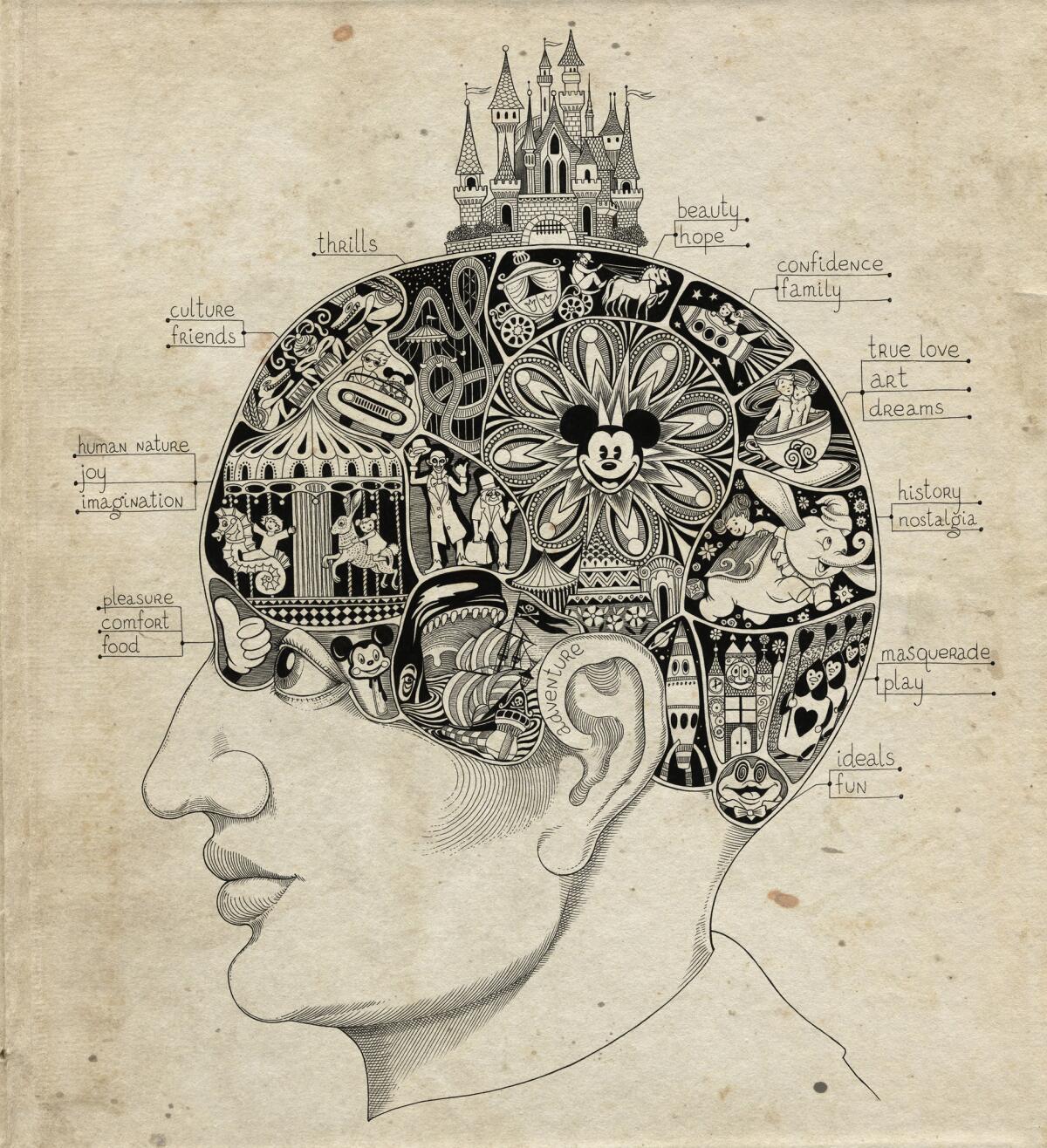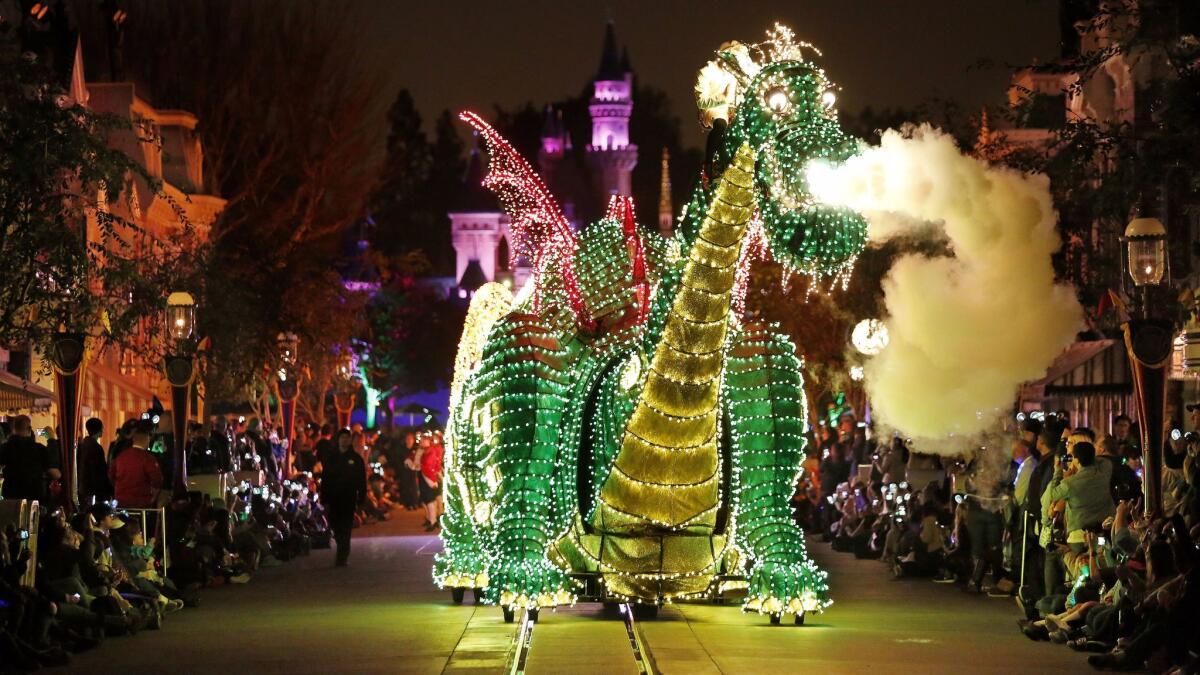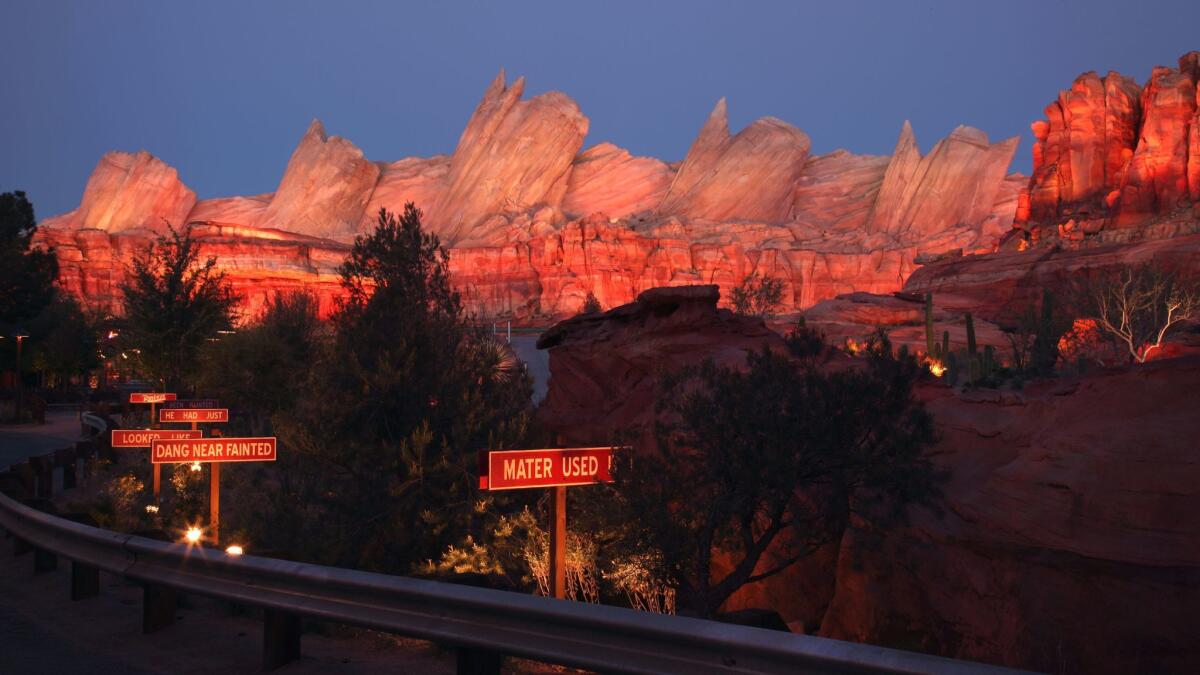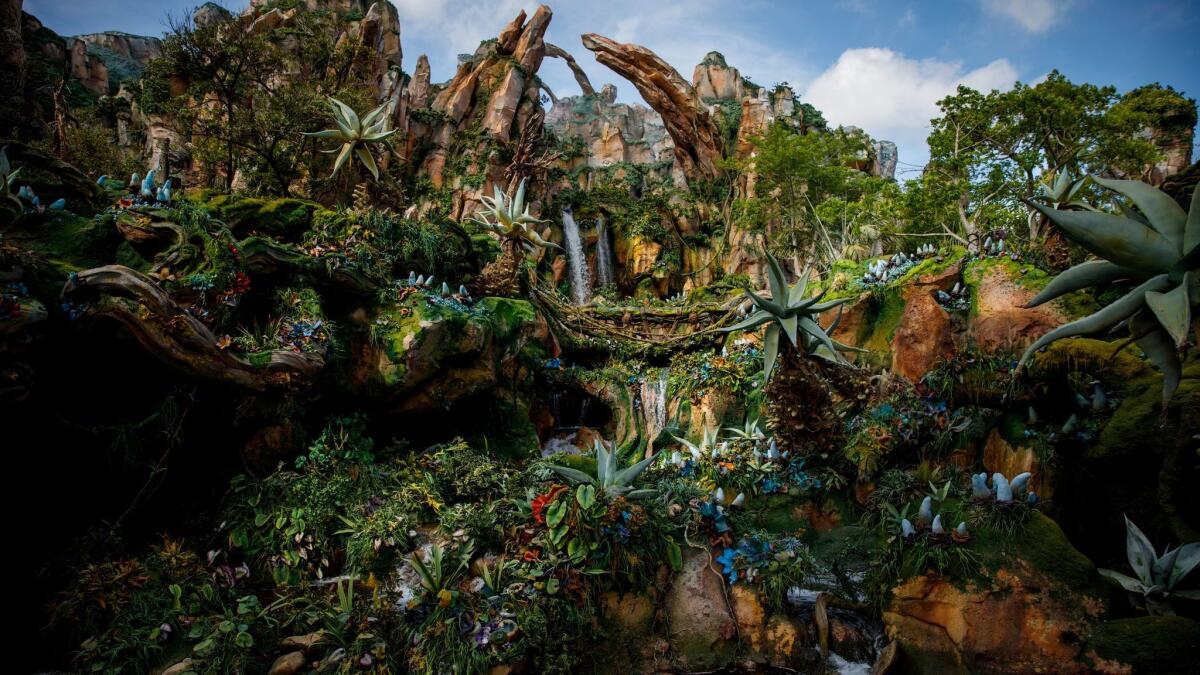This is your brain on Disneyland: A Disney addict’s quest to discover why he loves the parks so much

Reporter Todd Martens asks Disneyland attendees why they still go to the park after all these years.
My name is Todd and I am addicted to Disney theme parks.
This spring, I spent 10 days at
"Why?" she said, with a mixture of confusion and disgust when I told her about my then-upcoming trip; she herself was headed to Spain for two weeks. The implication: Why didn't I take this opportunity, as a single man in his soon-to-be-late-30s, to explore the world rather than the World Showcase?
That's a good question.
It’s not weird to be a fan of Disney parks. Just shy of 18 million people visited Disneyland last year, according to a report from Los Angeles consulting firm Aecom, and the tourist franchise it spawned has shaped and reflected American pop culture for more than 60 years. And yet I recognize that my habit of visiting Disneyland multiple times each month could be viewed as odd.
So while I wasn't going to change my vacation plans, I realized I needed a solid answer to that semi-disgusted “Why?” — one that went beyond the standard conclusion that it’s “fun.”
After things with the woman went bust, and I returned from Florida, I rang up Marty Sklar. If anyone should be able to articulate why we love Disney parks, it’s a former head of Walt Disney Imagineering who wrote speeches for Walt. So, I asked Sklar, why did I pick Disney World over, say, Spain?
"That's a hard question to answer," he said.
Clearly, this wasn’t going to be as easy as I thought.

Familiar complaints
Disneyland has many detractors with a familiar litany of complaints: It’s hot. It’s crowded. It’s expensive. There are too many strollers. There are too many childless guests complaining about the strollers. Parts of the park, especially Main Street U.S.A., present a tidied-up vision of America that never existed.
Irving Biederman, a professor of psychology at USC, has been to some Disney parks and his gripe is one I regularly hear from friends: too fake. As a child, Biederman rode the park’s submarine attraction and was less than enamored with the mechanical fish.
“One of the things I don't like about Disneyland is the design almost forbids surprises,” he says. “The fish weren't real. I would have preferred real fish. Then something unusual could happen. If it's fake fish, there's no surprise. Once you get by the initial experience of Disneyland, one of its shortcomings is there's going to be no surprises.”
I’m about to counter with the level of spontaneity present at Disney World’s Animal Kingdom, when he notes that even with such “shortcomings,” it makes perfect sense that millions of people will endure potential headaches to experience a place such as Disneyland.
Humans, he says, are “infovores.” We’re always on the prowl for new information and fresh experiences that have the ability to trigger opioid receptors in the brain, which in turn give us pleasure. He offers as an example two windows, one looking out toward a brick wall and the other a grand, beach-like vista.
“So,” he asks, “which window would you gaze out? It's a no-brainer. We would take it as a sign of pathology if someone was staring at the brick wall.”
Disneyland, with its lush and fanciful architecture — a fairy-tale castle up ahead, a Swiss mountain to the right, and ol’ western-like movie set to the left — is full of details that attract our brain’s attention.

“So why do we go to theme parks? It gives us new experiences if you haven't been there before, or if you've only been there once or twice it's still different from your everyday life,” Biederman says. “There can be other elements — the thrill we get of rides that are exciting. That's an opioid release.”
The concept of repeat visits, however, gives him pause. He questions whether I would want to watch the same movie 20 times and then he begins asking things like, “Does your repeated engagement with the Disney experience stem out of anxiety or fear of less safe, less predictable settings?”
I am indeed beginning to experience anxiety when, mercifully, he assures me that I am not crazy. “Your self-awareness of this as a potential problem is an indication that this engagement with the world of Disney is not a distortion of reality,” he later clarified in a follow-up email. “If your passion was music, painting, cooking, chess, or automobile mechanics, people wouldn’t bat an eye.”
For the record, I am also quite heavily obsessed with music, and have recently taken up cooking. Disney devotion can connote endless adolescence, but as Biederman began to interview me, the ways in which I engage with the parks became more clear.
Sometimes, I don’t even go on a ride; instead, I simply people-watch and soak up the atmosphere. Other times, I’ll bring work, sit with my laptop in the lobby of the Grand Californian, only venturing into one of the parks when I need to clear my head. Increasingly, I’ve been approaching the parks from a more studious perspective, investigating its history and reporting on new developments.
While in Orlando, I worked on a story about the then-upcoming debut of the “Avatar”-inspired land of Pandora. During an interview, veteran Imagineer Joe Rohde, who oversaw its creation, reiterated that nothing at a Disney park was there by accident.
“If a detail is onstage,” Rohde says, “that detail is there for a reason. The detail does not exist to serve its own purposes. It only exists to serve narrative purposes.”
A small thing, perhaps, but one that turns any visit to a Disney park into something more akin to a game. In Disneyland’s New Orleans Square, for instance, there is what appears to be a boarded-up tunnel, which many fans believe was a crypt designed to connect the story lines of Pirates of the Caribbean and the Haunted Mansion.
Unlikely, but such minutiae turn the park into more of an active experience, as the many fan websites prove. We are not simply spectators, we’re players, exploring a world that has been crafted by master designers while concocting our own set of stories.
“You're not gaga over cartoon characters,” Biederman says with a hint of relief. “ I think your motivation is kind of an intellectual one. What you're sensitive to and trying to understand is the brilliance of the design.”
Yes, yes, that’s it — I’m sensitive to brilliance. I’m feeling better about myself already.

‘A lot to unpack’
There are also emotional factors at play, and most certainly nostalgia. It’s no secret that many gravitate to Disney parks for family bonding experiences, which the parks leverage at every photo op. But as I don’t have a girlfriend, let alone children, such a thesis doesn’t apply to me.
Sklar, after a moment, offered the theory of Disney artist/Imagineer John Hench, who worked on “Fantasia,” “Peter Pan” and more.
“John Hench used to say that Disneyland was reassuring,” Sklar said. “You could speak to a stranger. You feel safe. You know you're going to be respected. Everything is clean. It's an example that you take back to your own community. ‘Why can't it be like this? Why can't we treat people like we get treated at the Disney parks? Why can't our streets be as clean as it is at Disney?’
It's reassuring because you know things work.”
Idealism, then, which appeals to my serious streak of hopeless romanticism; perhaps that’s the answer? I ask Andrea Letamendi, a clinical psychologist who has delved deep into fandom, what she thinks.
“It's much more complicated than it being one thing,” she said, adding: “There’s a lot to unpack.”
She keys in on my ability to work while at Disneyland, noting that I’m not going there solely for escape, and compared my enjoyment of the parks with that of those who engage in cosplay, which, she says, enables many to heighten aspects of their personality; in my case, she suggests, Disneyland speaks to my optimistic nature.
I may not wear a costume but, she said, Disneyland obviously enables me to feel more in touch with my identity. “For you,” she said, “that's who you are. Maybe for other people it bothers them. ‘Why are you here by yourself?’ ‘Why do you collect Disney artifacts?’”
“But,” she continued, “you find it quite calming, and you find it to be a nice blanket and cushion to relax in. You're not alone. Many people have that experience, but I can see why it's difficult to relate to that.”
She does, however, wonder if it’s sustainable as I get older. “If you see a guy in his 50s just kind of wandering around the park, it's off-putting. As a psychologist, I know there's nothing wrong with it. But I know that society has concerns.”

Yet for all its youthful draw, Disneyland is not a playground. Theme parks are a thoroughly modern invention based as much on technology as the belief in pixie dust, and we’re only just beginning to understand their growing role as a storytelling medium.
Large, immersive worlds invite us to be participants in theater on a grand scale. It’s possible to go on a wild simulator ride such as Flight of Passage at Pandora and simply just enjoy the thrill of soaring on the back of a dragon-like creature called the banshee. Or one can slow down and piece together the narrative blocks of the story, discovering how an entire make-believe eco-system fits together. It’s like walking through a real-life video game.
“Your brain comes into that place where another brain has done all the organization, all the super cohesiveness that your brain is looking for,” explained Rohde. “So it’s like surfing on a wave instead of surfing out to sea against it.”
In the end it may be as simple as some people asking “Why?” and others asking “Why not?” My personal theory is that there are people who enjoy Disneyland, and those who just haven’t admitted it yet. Even Biederman, who expressed plenty of Disney skepticism, paused when I mentioned Pirates of the Caribbean; in seconds he was telling me about the first time he went, how “riveted” he was.
“Pirates of the Caribbean,” he repeats. “I love that. One of the things I love about Pirates of the Caribbean is the smell. I love that musty smell. It gives you a sense of adventure.”
Follow me on Twitter: @toddmartens
ALSO
Meet Disney's philosopher king: the brain behind 'Avatar's' Pandora and Marvel's 'Guardians' ride
Behold animatronic Cosmo (and Rocket) inside Disneyland's 'Guardians of the Galaxy' ride
The biggest entertainment stories
Get our big stories about Hollywood, film, television, music, arts, culture and more right in your inbox as soon as they publish.
You may occasionally receive promotional content from the Los Angeles Times.








